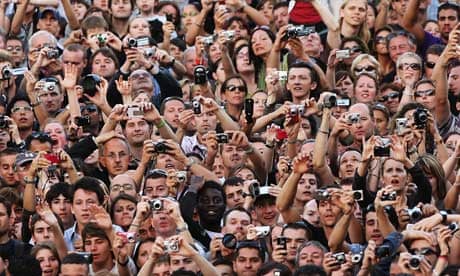My wife, Yana, and I established our photographic studio in 2007, and I have to admit that it was a steep learning curve in the beginning. Taking pictures is only a small part of the professional photographer's business. There are a multitude of other things that need to be addressed to make your company successful. And, in a fiercely competitive market, in which anyone can buy a camera and call themselves a professional photographer, your experience, credibility and business acumen will be stretched and challenged in the early days.
Choose a specialisation
Choosing an area of photography to specialise in is one way of distinguishing yourself in a crowded market. In the early days there is little option but to take every job going, even if you are not so familiar with the subject matter or conditions. You say yes to any inquiry that comes your way for any budget. Most photographers do this until they establish their name and reputation.
Once you are known for your expertise, it can be reflected in your charges. In the beginning, equipped with nothing but a camera and a passion to succeed, we charged as little as £70 to £150 for an hour-long session, which only just covered our food bills and the next bit of kit. Now, that kind of price would not cover the huge number of studio overheads – rent, insurance, rates, salaries, equipment and equipment maintenance.
Invest in the right equipment
A bad workman may blame his tools, but a good photographer knows that the right quality equipment can make a big difference to his results. This will be your principal investment, and it pays to buy the best you can afford. Do your research and work out how to allocate your budget to get the most useful equipment. As your business grows, you will be able to afford better, but, when you are starting out, it may be a good idea to take out a loan or seek third-party investment.
Think about which camera and lenses will be most appropriate for your chosen area of specialisation and then select a computer and photo editing software. Of course, these are the bare minimum. You will need to decide whether you are going to rent a studio and what sort of lighting you will require.
Insurance and other incidentals
For me, it was the non-photographic elements of setting up the business that I found most challenging. Getting to grips with all the different insurance policies I needed took some time. We have indemnity and liability insurance from one company, our equipment is insured on a different policy, while our building insurance is with yet another company. Our public liability covers accidents with clients and their property while working with them – simple accidents, such as tripping over a tripod or lighting stand could put you seriously out of pocket if a client sues.
But that is only part of it. You will need to decide whether you are going to operate as a limited company, in partnership or as a sole trader. For many photographers turning professional, it will be the first time they have had to deal with payroll, VAT and tax. Find a trusted accountant, ideally one recommended to you by a friend.
Building a portfolio builds credibility
To charge a professional fee for your photography, you will need to convince potential clients that you have the skill and experience to deliver the job. To do this it's vital that you have a professional-looking portfolio, weighted towards your area of specialisation. Professional presentation of your work is critical, and if you are not prepared to throw good money at it, you will not stand out in the theatre of presentation to your clients. You could expect to pay anything from £400 to £1,000 for a handmade portfolio book or a loose-leaf box, a solid leather or fabric box that for loose photographs/prints; and the prints themselves could set you back a further few hundred pounds. If you expect people to pay top dollar, you need to be able to show them they will receive high-quality results. It took us years to build our photography portfolio, and it's still a work in progress. Building, editing and refining portfolios is an ongoing process throughout your entire working life as a photographer.
Marketing online
As well as being an expert photographer you'll need to learn all about search engine optimisation and social networking to promote your services. If you find it hard to do it all yourself, then investing in a monthly contract with a reputable SEO agency will definitely be worth your while. We were very lucky to get to the first pages of Google for a large number of keywords in a little over a year and pretty much stay there building on the quality of work we produce.
Professional photography is a highly competitive industry. Your chances of success will be multiplied if you know your craft and if you take the time to gain experience working for someone else. However, once you know the ropes, running your own photographic business is a challenge that will bring its own rewards.
David Locke is founder and chief photographer at Headshot London
- This piece was originally published in June 2013.
Sign up to become a member of the Guardian Small Business Network here for more advice, insight and best practice direct to your inbox
